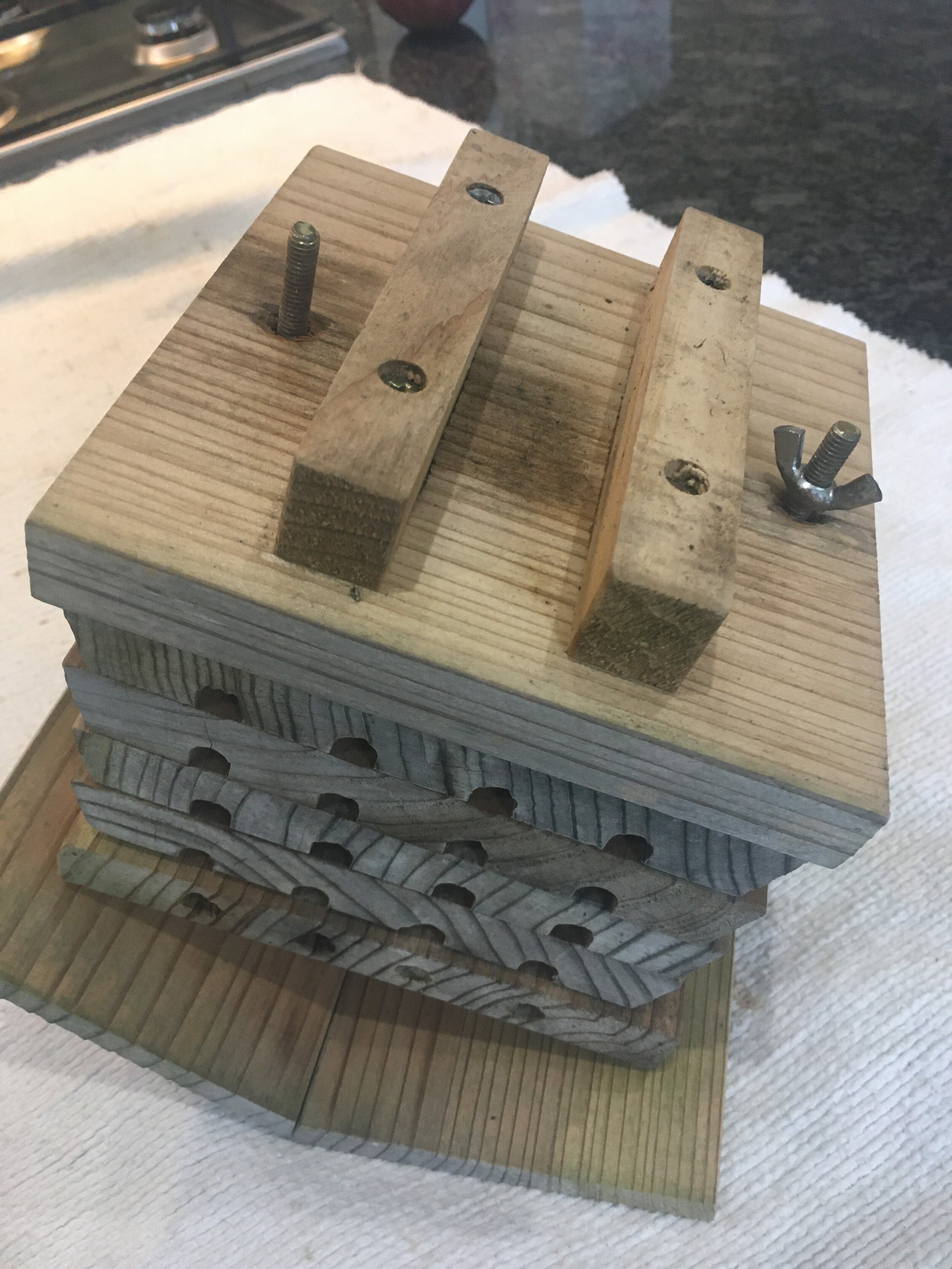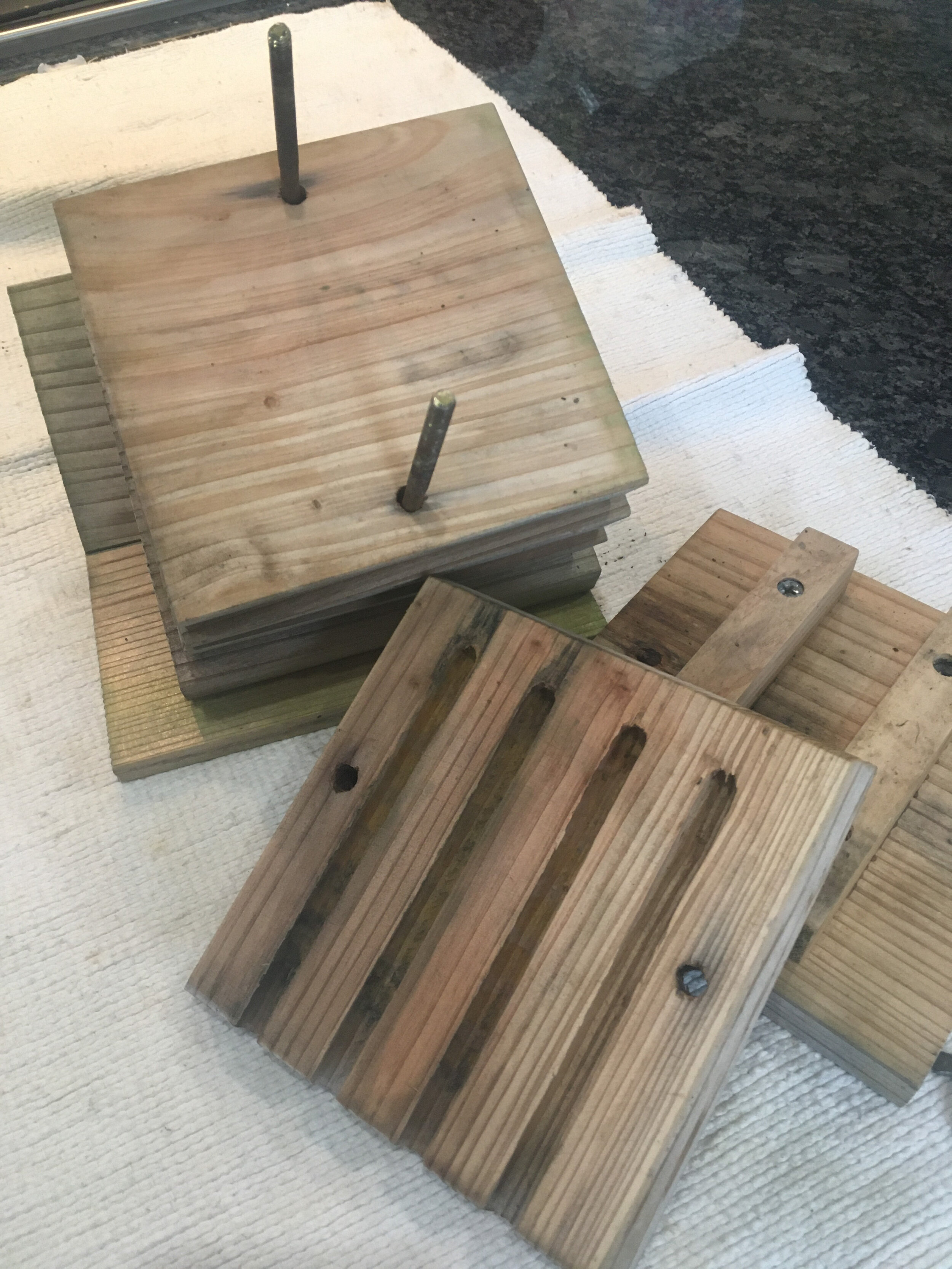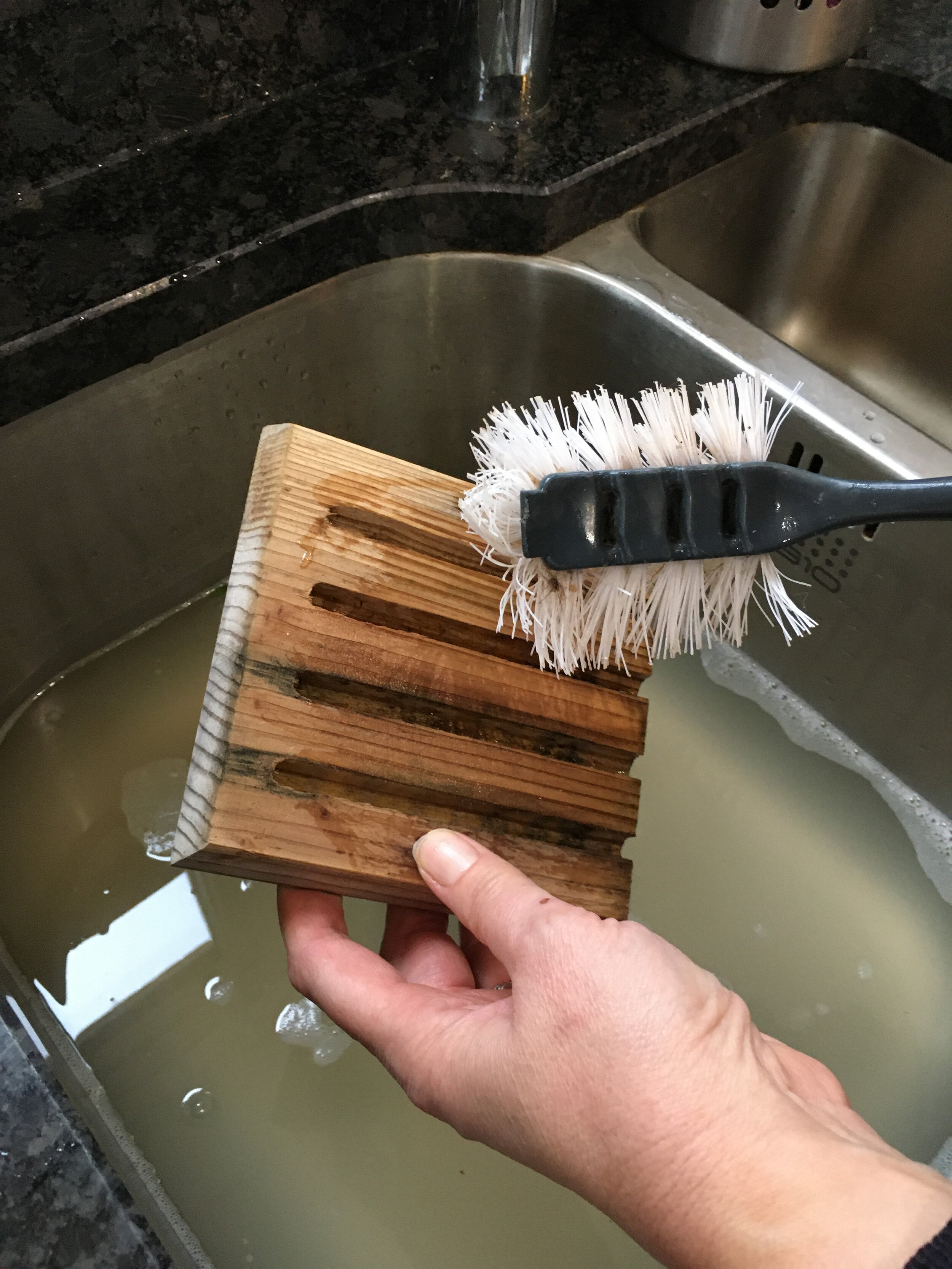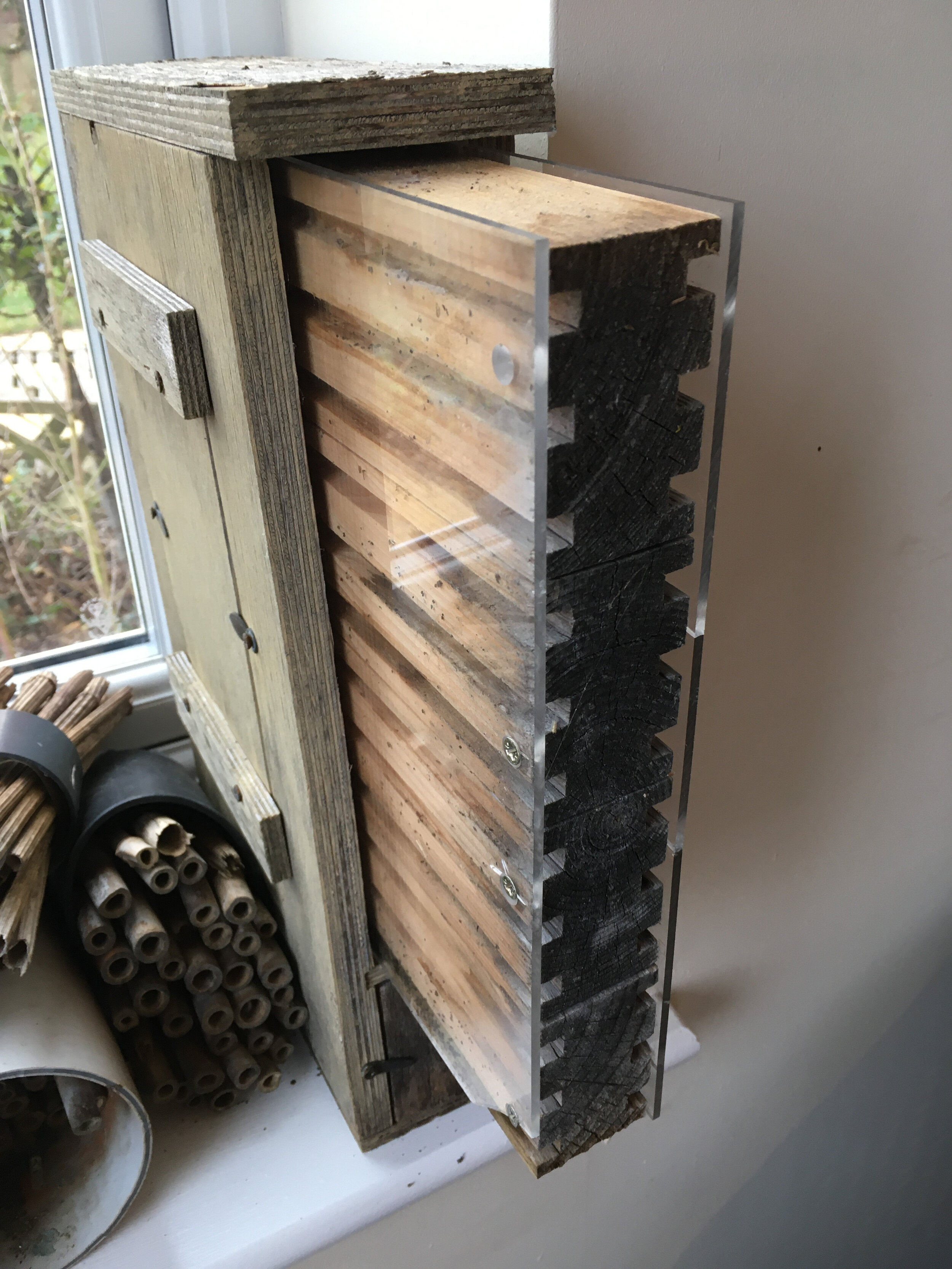Clean your solitary bee accomodation
This is one of the really important things that most sellers of ‘bee hotels’ fail to tell you. There are plenty of different designs in garden centres and I have noticed craft stalls now selling them at summer events. Most of the designs seem to prioritise aesthetics rather than function;
the holes are often the wrong size, not smooth enough and too short.
they often have pointless pine cones or twigs in sections as well as holes for bees. (pine cones and twigs might be good for other insects but typically those like damp shady positions where bees like dry sunny spots)
and they are clearly not designed for being cleaned.
Assuming that the holes for attracting bees are the right sizes, then they need to be cleaned if unused. Tube-nesting bees will not use tubes that are dirty. They get dirty either by being used by the bees or by spiders and other insects taking up residence. Any time from October to February is the ideal time clean them as it will be quite obvious which tubes are in use and which are not. The ones where you can see mud or leaves covering the end of the hole are in use and you should leave these ones alone.
Each empty tube needs to be cleaned with warm water or at least brush out any dry debris. A small bottle brush or pipe cleaner is the easiest way for fixed tubes. I much prefer to use the type of bee accomodation that comes appart as it makes it much easier to clean. I also tend to remove all the bee cocoons which makes cleaning much easier. The cocoons will be kept cool for resease in spring.
I get on really well with little house design you see above (from amazon) but the last picture is the model from Nurturing Nature that is also very popular with people who know thier bees.





